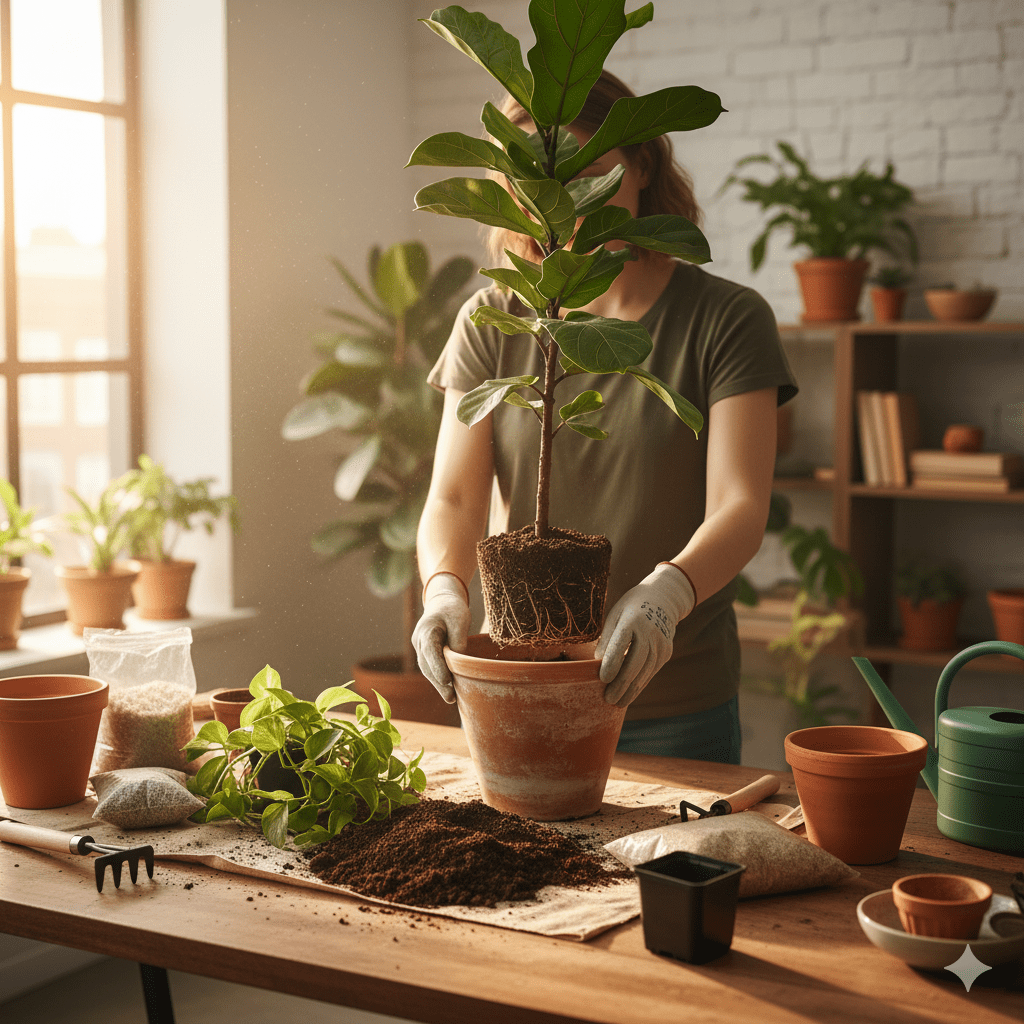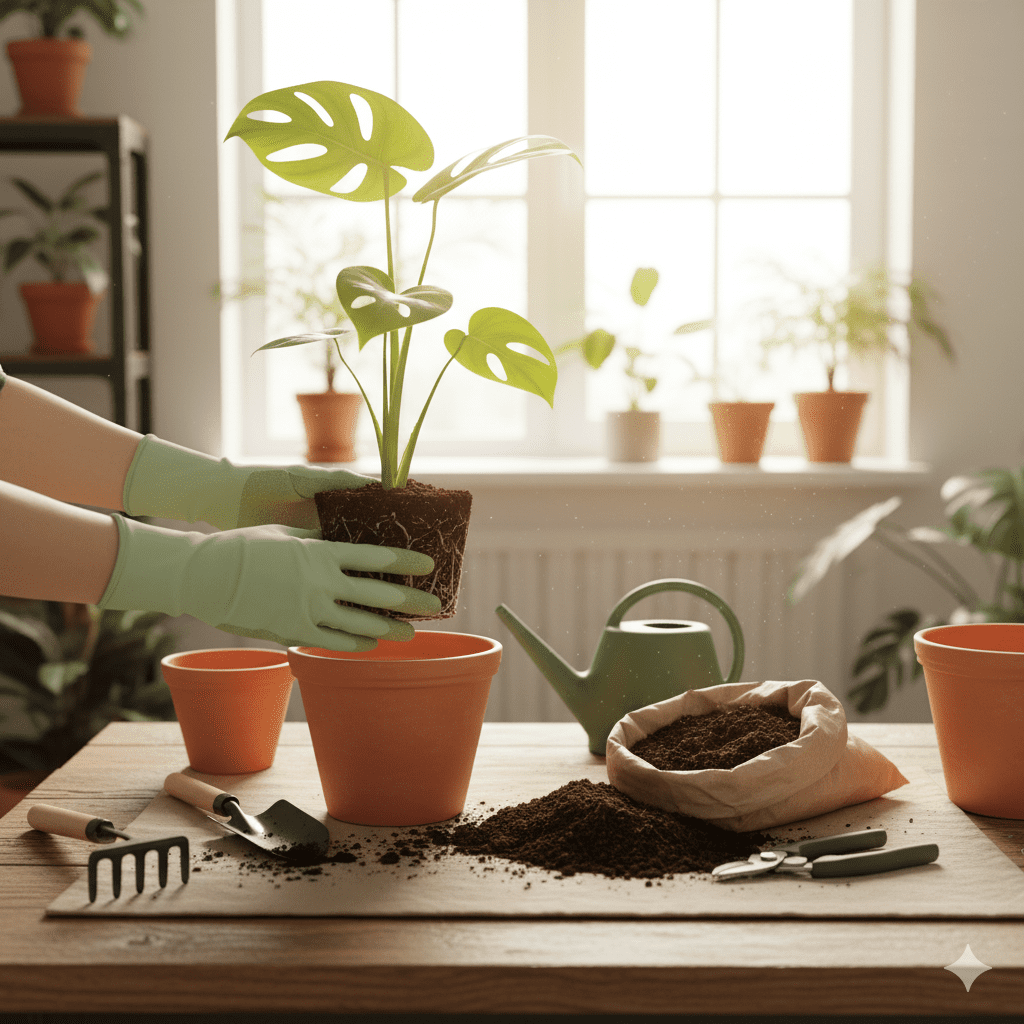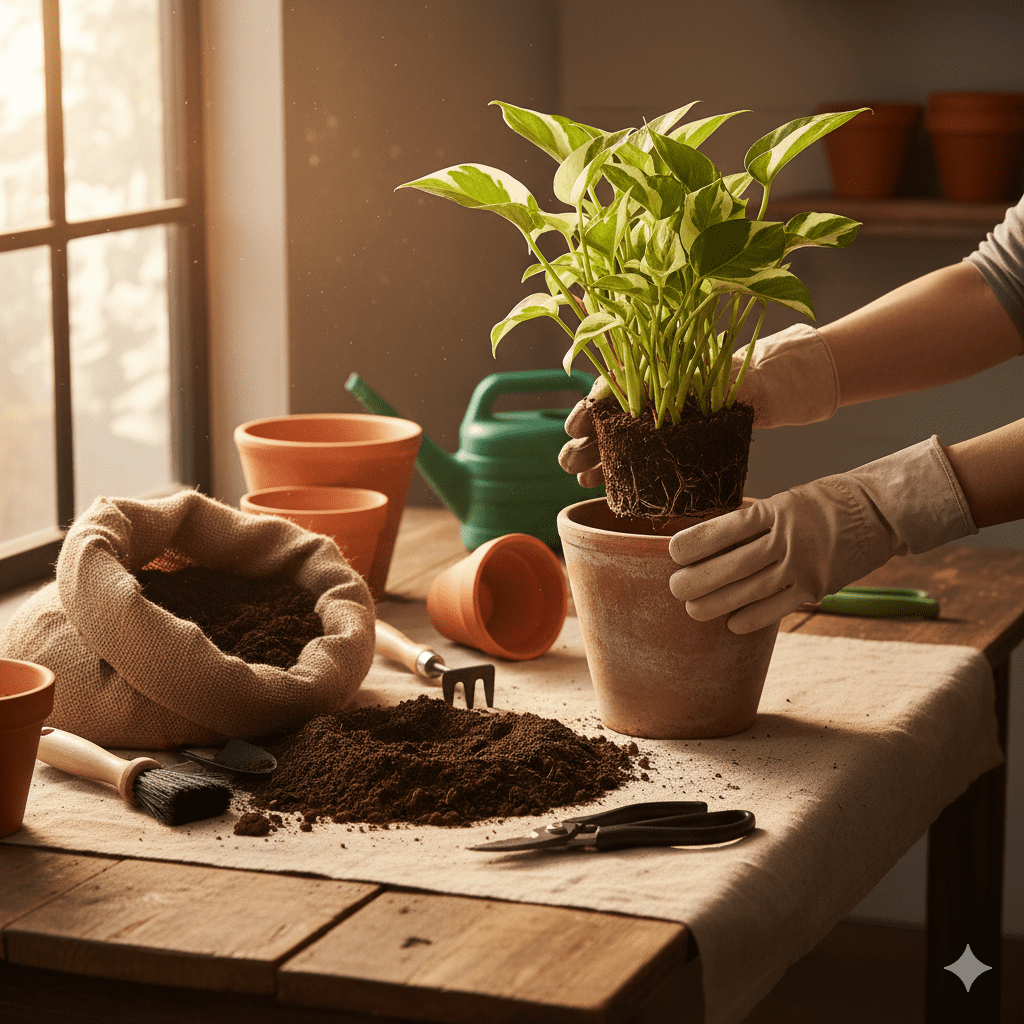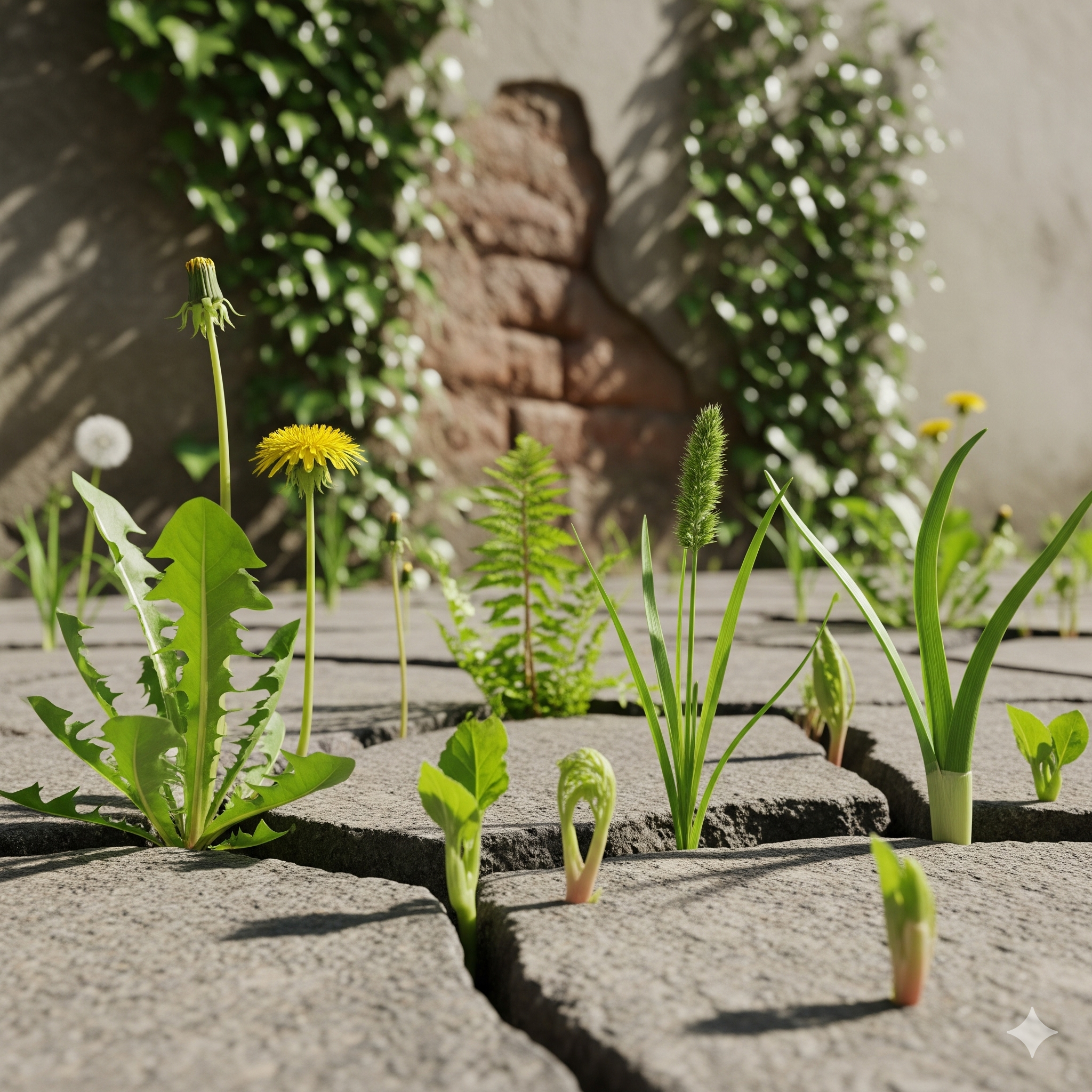Some links on this Website are affiliate links, meaning we may earn a commission if you make a purchase, at no additional cost to you. Please read our full Affiliate Disclosure for more details.
Repotting is one of the most essential parts of houseplant care. It allows your plants to stretch their roots, access fresh nutrients, and continue growing happily. But here’s the thing, many plant lovers unintentionally make repotting mistakes that can cause serious harm to their plants.

From choosing the wrong pot size to using poor-quality soil, these small errors can stress your plants, stunt their growth, or even cause root rot.
If you’ve ever wondered why your plant looks droopy or starts dying shortly after being repotted, the problem might not be the plant itself, it could be how it was repotted.
In this guide, we’ll go over the seven most common mistakes to avoid when repotting and explain how to repot a plant correctly so that it thrives, not struggles.
What Causes Root Rot In Orchids?
How To Identify Root Rot In Succulents
Repotting Mistakes That Can Harm Your Plants
1. Choosing the Wrong Pot Size
One of the biggest and most common repotting mistakes is selecting a pot that’s either too big or too small for your plant. While it might seem logical to give your plant more space to grow, an overly large pot can actually hold excess soil and water.
This excess moisture can lead to root rot, as the soil remains damp for too long. On the other hand, a pot that’s too small restricts the plant’s root growth and limits its ability to access nutrients and water.
When you’re repotting, the best rule of thumb is to choose a pot that’s 1 to 2 inches larger in diameter than the current one. This provides enough space for root expansion without overwhelming the plant with too much soil. Additionally, always make sure the pot has proper drainage holes to prevent water buildup at the bottom.
2. Repotting at the Wrong Time

Timing plays a crucial role in the success of repotting. One of the common repotting errors is repotting a plant during its dormant phase or while it’s already under stress. Most houseplants grow actively during spring and early summer, which makes this the best time to repot. During this period, the plant is already producing new roots and leaves, so it can recover quickly from the disruption.
Avoid repotting in winter or when your plant is flowering. Dormant plants aren’t actively growing, so they can’t easily adjust to the new soil environment. Similarly, plants in bloom are using most of their energy for flowering rather than root development. If you notice roots poking through the drainage holes, soil drying out too quickly, or stunted growth, that’s your cue that the plant needs a new pot.
3. Forgetting to Loosen the Roots
When you remove a plant from its old pot, you’ll often find the roots tightly packed in a circular pattern—this is known as being root-bound. Many beginners make the mistake of placing the plant directly into a new pot without loosening these roots.
Unfortunately, that means the plant continues growing in the same restricted pattern, which prevents it from spreading out and absorbing nutrients efficiently.
To avoid this, gently tease apart the roots before placing the plant in its new pot. You can use your fingers or a clean gardening tool. Don’t be afraid to trim away any dead, damaged, or mushy roots; this encourages healthy new growth. Breaking up compacted roots also helps them adapt more easily to the new soil environment.
Can I Save A Plant From Root Rot?
4. Using the Wrong Potting Mix

Not all soil is suitable for every plant, yet this is one of the most frequent mistakes to avoid when repotting. Using garden soil or an inappropriate mix can cause poor drainage, compaction, and root suffocation. Each plant type has specific soil requirements, and using the wrong kind can quickly lead to problems like overwatering or nutrient deficiency.
For example, succulents and cacti prefer a gritty, sandy mix that drains quickly. Tropical plants like Monstera or Pothos need a loamy, moisture-retentive mix that stays slightly damp but not soggy. Meanwhile, orchids require an airy, bark-based medium that allows plenty of airflow to the roots.
Before repotting, always research your plant’s specific soil preferences. Investing in the right potting mix will ensure healthy roots and long-term growth.
Top 8 Repotting Mistakes Every Gardener Makes (and How to Avoid Them!)
5. Overwatering Right After Repotting
One of the easiest mistakes to make after repotting is watering too much. Freshly repotted plants have disturbed roots that are still adjusting to their new environment. Flooding the soil immediately can overwhelm those roots and lead to root rot or fungal infections.
Instead, give your plant a light watering after repotting; just enough to moisten the soil and help it settle around the roots. After that, wait a few days before watering again. Allow your plant time to adjust and for any small root injuries to heal. Once you notice new growth, you can resume your regular watering routine.
Remember, less is more when it comes to watering newly repotted plants.
7 Easy Tips For Growing Plants Indoors
6. Not Providing Proper Drainage

A pot without drainage holes is a recipe for trouble. Without a way for excess water to escape, the soil becomes waterlogged, suffocating the roots and creating a breeding ground for bacteria and fungi. This is one of the most overlooked yet serious repotting mistakes.
Always make sure the new pot has at least one drainage hole at the bottom. If your chosen pot doesn’t have one, you can add a thin layer of pebbles, perlite, or broken pottery at the base to improve drainage.
However, this is only a temporary fix and the best solution is always to use a pot with proper holes. Healthy drainage keeps your plant’s root system oxygenated and prevents moisture-related diseases.
How To Aerate The Soil In A Potted Plant
7. Ignoring Post-Repotting Care
Repotting doesn’t end once you’ve placed your plant in its new home. Many plant owners forget the importance of post-repotting care, which can make or break the process. After repotting, plants often experience mild transplant shock, showing symptoms like droopy leaves, slowed growth, or slight yellowing. This happens because the roots need time to adjust and re-establish themselves in the new soil.
During this period, avoid placing your plant in direct sunlight or adding fertilizer. Too much light or nutrients can stress the plant even more. Instead, keep it in indirect light, maintain moderate moisture, and give it a few weeks to recover. Once it starts showing new growth, you can slowly resume normal care, including fertilizing.
Why Are My Citronella Plant Leaves Turning Yellow?
Tips to Make a Jade Plant Bloom
Frequently Asked Questions (FAQ)
1. How often should I repot my plants?
Most houseplants should be repotted every 12 to 18 months, depending on their growth rate. Fast-growing plants may need it more often, while slower ones can go longer.
2. Can I reuse old soil when repotting?
It’s best to use fresh potting mix. Old soil tends to lose nutrients over time and may harbor pests or fungi that could harm your plant.
3. Should I water before or after repotting?
Water your plant a day before repotting to make the soil easier to work with and reduce root stress. Then lightly water it again after repotting.
4. Why do my plants wilt after repotting?
This is usually a sign of transplant shock. Give your plant time to adjust, keep it in a shaded area, and avoid fertilizing until new growth appears.
5. What kind of pot is best for repotting?
Terracotta pots are great for plants that prefer drier conditions since they allow moisture to evaporate. Plastic or ceramic pots are better for moisture-loving plants.

